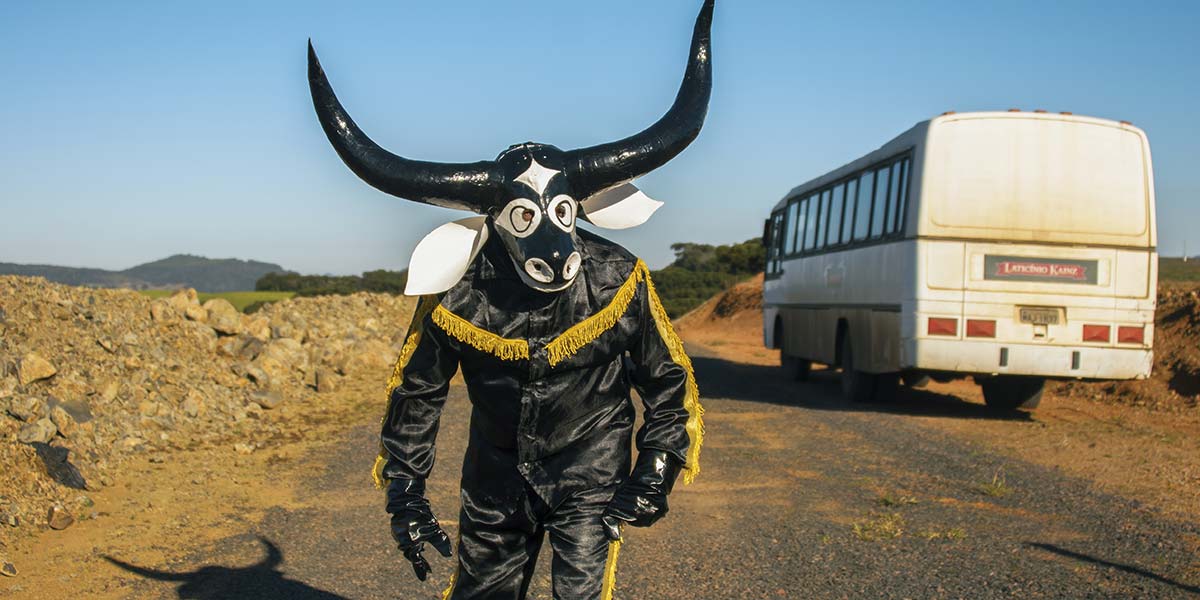It doesn’t take long for Memory House to dive right into politics. Within minutes, dairy factory worker Cristovam (Antonio Pitanga) finds himself sitting across his boss in a large office, subject to a mostly expository meeting with necessary backstory. Christovam is Black, indigenous, and from the poor, rural northern half of Brazil where the factory used to operate. When the factory was sold to Austrians who moved it south within their own community, Christovam joined them to keep his job, making him an odd man out. His boss informs him that, despite dedication and years of service, they’ll be cutting his pay and any complaints will threaten his pension. It is the first of many humiliations to endure.
It’s through Christovam that director João Paulo Miranda Maria explores Brazil’s tumultuous present and how it stems from a colonialist past. Outside of work, Christovam finds nothing but hostility from the (mostly white and Austrian) townspeople, whether it’s at the bar he frequents or from a group of children who keep harassing and attacking him. He comes upon an abandoned house where kids play, and inside which he discovers photos and other items tying directly to his ancestral origins. The house soon becomes a refuge from the barrage of racism he encounters on an everyday basis, but attempts to embrace his past and culture run in opposition to the degraded role he’s forced to take on to earn a living, resulting in tension that can only create a violent outcome.
Miranda Maria tackles his ideas via folklore and mythology, showing the psychological impact of the racism and hatred his protagonist handles. This tactic breeds mixed results. After seeing cows slaughtered at his work and a dog tortured by the aforementioned group of kids, Christovam finds a connection with animals through his own dehumanizing experiences. This develops into the film taking a magical direction: dream sequences, hallucinogenic visions, and at one point a detour into the POV of a cow at a cattle auction. It’s easy enough to understand how such elements contribute to portraying Christovam’s changing state of mind. It’s a little harder to see how they coalesce into something beyond their separate functions. There’s a problem with Memory House trying to convey its lead character’s interiority when it feels more like specific items its director wants to hit on.
This persists as the film continues. There’s a brief subplot involving a co-worker with whom Christovam gets romantically involved, their only purpose to provide an outlet for him when he lashes out at a racist attack by trying to become an aggressor himself (represented by him turning into a cowboy). These choices leave Memory House feeling a bit too schematic, as if we see the points it wants to make but can’t see them connecting to each other. That makes it difficult to find much emotional power in its tragic, inevitable climax, no matter how arresting its visuals might be. At the very least, Miranda Maria’s film has a lot of value in what it wants to say; unfortunately it lacks a good grasp on the best way to express itself.
Memory House screened at the Toronto International Film Festival.

